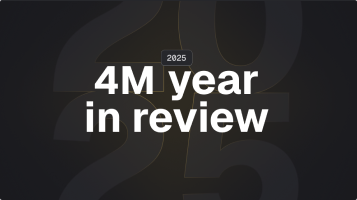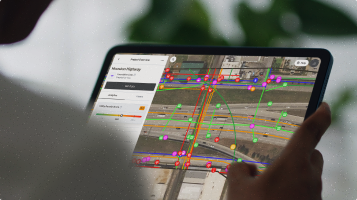Why Utility Coordination is Key to Project Success
Written by

Published on
April 24, 2022


Table of contents
When project owners look at the utility landscape of a new project for the first time, they’re likely to face a challenging reality. On almost any site, they will need to work around oil and gas pipelines, water lines, telecommunications cables, and electric and power cables—all with no guarantee that these subsurface utilities are located correctly, if at all, on the map.
To succeed in a challenging utility landscape, project owners, project managers, and engineers need to practice utility coordination. Effective utility coordination that integrates all utility stakeholders is key to completing projects safely, on time, and on budget.
In this post, we’ll touch on the following points:
- Why is utility coordination important?
- Who are the major stakeholders in setting a strategy for successful utility coordination?
- What are the obstacles to successful utility coordination?
- How can utility mapping play a role in successful utility coordination?
Why is utility coordination important?
Unmitigated utility risk can turn any project into an expensive nightmare. Without a well-established strategy for utility coordination, project owners and managers run the risk of delays, costly utility relocations, and expensive and dangerous utility strikes.
Utility coordination helps all stakeholders in the construction process mitigate utility risk by facilitating communication and information exchange early in the project process. The Common Ground Alliance (CGA) defines utility coordination as when “project owners and facility owners/operators regularly communicate and coordinate with each other concerning future and current projects.”
By setting a coherent utility strategy from the outset, project owners and project managers can keep their projects on track. That requires balancing and coordinating between the many utility stakeholders that need to work together to provide a complete picture of the utility landscape for a project.
Who are some of the major stakeholders involved in setting a strategy for successful utility coordination?
State regulatory commissions:
State regulatory commissions often hold databases showing the locations of many subsurface utilities. The Texas Railroad Commission, for example, holds extensive as-built data of oil and gas pipelines across the state of Texas. State commissions and Departments of Transportation also hold information on utilities that pass through the public Right of Way.
Municipal and county governments:
Local governments have records of easements and some privately-held pipelines, as well as large amounts of as-built data. While this data is often incomplete and not entirely reliable, it’s an important element of the utility coordination process.
Utility owners (public agencies and private owners):
Oil and gas, telecommunications, electric, water and renewable energy utility owners have as-built utility data for their production sites and transmission lines. Much of this as-built data may be confidential and privately held information, making it difficult to access early in the project lifecycle.
Subsurface utility engineering (SUE) providers:
SUE companies specialize in locating underground utilities. These engineers use a range of different locating methods, including ground-penetrating radar (GPR), vacuum excavation, potholing, electromagnetic locating, and metal detection.
811 Centers:
811 “Call before you dig” centers offer free utility marking services in every state. These services receive as-built data from public and private utilities and mark the physical locations of subsurface utilities on a project site using paint markings and flags. However, 811 services are only as good as the as-built data they receive—which is often incomplete and unreliable. Calling 811 before beginning to dig is a legal requirement across the US for every project that involves significant excavation.
What are the obstacles to successful utility coordination?
Utility coordination is often a challenging pursuit. Here are a few of the most common obstacles to success:
- Data location and access
- The first challenge engineers face is that of finding the utility data they need about a specific area. Depending on the region and municipality, existing utility information might be listed in an online GIS platform—or hiding in the dusty basement of a local town hall. Locating the most current as-built data and gaining access to it can be frustrating and time-consuming.
- Data inaccuracy
- Even if project leaders uncover the subsurface utility data they’re looking for, that data could easily contain errors or omissions. Contractors who create as-builts often make mistakes, and utility maps can be outdated. Often, the utility data will give project managers only a rough sketch of what’s underground.
- Unidentified lines
- Old utility lines that are no longer in use can still pose problems for construction crews. These forgotten pipes and lines are often unmarked or unidentified on as-builts and other data sources, making them all the more likely to be struck unexpectedly.
- Liabilities and delays
- Utility coordination is a delicate dance between owners, utility companies, municipalities, and other stakeholders, each with their own interests to protect. While they must cooperate to share information and enable projects to move forward, no one wants to be liable for unexpected utility discoveries or strikes. In some cases, the coordination phase can cause lengthy delays when contractors are unable to identify or connect with utility owners.
How can utility mapping play into existing utility coordination methods?
Utility mapping can be a crucial tool for successful utility coordination. It provides one central reliable source of data that combines existing as-built sources with extensive visual analysis and AI-based subsurface information, giving everyone a more complete understanding of the subsurface. Utility mapping can find discrepancies between as-built data and real-world conditions, allowing all stakeholders to dodge unwelcome surprises later in the project lifecycle.
By getting an early look at subsurface utility conditions in the conceptual and pre-design phases, project owners, project managers, estimators, and engineers can better understand the utility landscape of their projects. Armed with quality data gathered through remote sensing and computer-generated methods, they can make more effective bids, better allocate risk, and avoid costly redesigns later in the project delivery process.
Utility mapping can also allow SUE experts to confirm the location of utilities more efficiently at a project site, giving them a compass to guide their efforts and ensuring they don’t miss utilities that may not be discoverable using common SUE tools. Remote utility mapping that integrates a range of data sources can also cut down on wasted time spent shuttling between state, county, municipal, and private data records. And it can help engineers create the most accurate as-builts possible as they close out a project—helping all stakeholders get paid on time.
Interested in seeing how utility mapping can help your next project? Contact us
Recent blog posts

Our Newsletter
Join 7k infrastructure professionals
Get monthly insights on ways to build smarter, faster and safer with Utility AI.

.avif)




